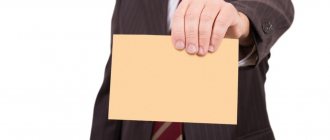We have already written about the uniqueness and protection of original content. Today we’ll take a closer look at how to protect your content from a legal point of view.
Theft of content (and copyrights to it) occurs all the time on the Internet. This cannot be avoided. Although no, there is still one way - not to publish anything at all. =)
Unfortunately, the content has been copied, is being copied and will continue to be copied.
And if it is impossible to prevent theft, then you can prepare to defend violated rights. So, in order.
A little tediousness: let's go over the articles of the Civil Code
Let me explain a little: the site (entirely), content from the site, photographs, pictures, videos - all this is subject to copyright.
But what does this beautiful formulation “creative work” mean? Every author who writes, photographs, draws, or comes up with a script, essentially has a mental process going on. He first comes up with an idea and then implements it. Mental processes prevail over physical ones, so this is creative work. If a person helps the author, for example, financially or assists in filming, then this is considered technical work, and in this case one cannot claim co-authorship. But if you give ideas, add to it or come up with something new, then please – you are a co-author.
And copyright in a work arises automatically at the moment of its creation.
Now let's figure out exactly what rights the author has. Traditionally, rights are divided into personal and property rights .
Also, the copyright holder may, at his own discretion, permit or prohibit other persons from using the result of intellectual activity. In this case, the absence of a prohibition is not considered consent/permission .
Note: the author and copyright holder are not always the same person. The author is the person whose creative work created the work. But the copyright holder can be either an individual or a legal entity. Since the law does not prohibit the alienation of rights in favor of other persons, the copyright holder has the exclusive right to the work.
Alienation of rights can be either in full or in part. And alienation occurs on the basis of a contract. For example, in the Service Agreement that we conclude with Customers, there is a clause that regulates relations in this area: “Exclusive rights to use the design, texts, illustrations and other materials developed in accordance with this agreement belong to the Customer (that is, the client) and are transferred to him after the Contractor (that is, us) completes the relevant work"
.
Briefly about the main thing
- The law protects videos, films, photographs, texts, images posted on the Internet. The fact that they are freely available does not change the rule: take someone else’s content only with the consent of the author.
- Copyright arises automatically from the moment the work is created. But you can take additional measures and make your life easier in case you have to prove authorship in court.
- This measure includes registering programs and databases with Rospatent, depositing works, saving drafts and sources, and placing a copyright icon.
- To avoid paying huge compensation, always enter into a licensing agreement with the copyright holder. It can be short, the main thing is to indicate in it the subject, limits, period and territory of use of the content.
- Another legal use option is to take content posted online under a Creative commons license. But be careful here: license terms do not always allow commercial use. Look for photos and music licensed under CC BY, CC BY SA, CC BY ND.
And yet, how to protect yours?
Tip #1: Put some kind of copyright warning.
For example, ours looks like this:
And another option is possible: “All materials on this site are subject to copyright (including design). Copying, distribution or any other use of information and objects without the prior consent of the copyright holder is prohibited."
.
Tip #2: Put up a copyright sign
This is the inscription familiar to the eye: .
Tip #3: Watermark your photos
And it's better to have your name on the watermark. You can, of course, indicate a website, email or pseudonym, but if your copyright is violated, it will be more difficult to prove that the site/mail/alias belongs to you.
Note: if the watermark in the photograph has been cropped/retouched, then this is already a violation under a separate article of the Civil Code of the Russian Federation -.
Tip #4: Don't share your original photos with anyone.
As well as drafts/sketches of your works, etc. After all, all this is proof of YOUR authorship.
Tip No. 5. Record the authorship of the text
We even dedicated an article to this, you can read it here. Yandex.Webmaster allows the search engine to know that this text is yours. Which, accordingly, will reduce the likelihood of plagiarism.
Tip No. 6. Tell users about the release of new material
For example, highlight new blog articles via social media/newsletters. In other words, announce the release of your content, as we do =)) There are other advantages to this, for example, attracting traffic.
Tip No. 7. You can print out an article/website page/picture and have it certified by a notary
Of course, this will cost money. But the evidence will be indisputable.
There are also options for using scripts to prohibit copying/selecting text, adding a link to the source when copying. But these are options that are easy to work around (details in this article).
Incorrect pricing policy
Pricing is one of the most important issues on marketplaces, as they strive to offer their audience the best possible prices at the expense of suppliers.
In this regard, sellers must:
- set a price that will not exceed the cost of a similar product on the manufacturer’s websites and other marketplaces;
- take into account current average market values;
- do not go beyond the price limits of identical products from other manufacturers.
Marketplaces have different monitoring systems. For example, Ozone monitors the price index and, if it exceeds a set threshold, the seller’s products are blocked.
If it does happen...
There are two options for the development of events: pre-trial settlement of the conflict and trial, if the first option does not work.
Pre-trial conflict resolution
First, write a letter of complaint to the violator of your rights. Contacts can be found on the site where you saw your content. If the content was posted not on the website, but, for example, on a social network, then contact the resource administration immediately.
lists the requirements for completing an application (letter of claim).
And at the end of the statement, you can give the offender a little nightmare: “If this information is not removed from your site within 24 hours, we will file a statement of claim in court.”
.
Note: the application can be submitted in writing (sent by mail), or submitted electronically (scanned document). If the application is submitted by a person authorized by the copyright holder, then it is necessary to attach to the application a document that confirms these powers (for example, a power of attorney).
If it turns out that the site owner ignores your letter, then you still have the right to contact the hosting provider. To install a provider, you can use the service https://whois-service.ru/. And please note that when filing a claim with the hosting provider, you must have prepared evidence of your authorship.
We send a letter of claim/application to the hosting provider, but only without a threatening signature about going to court (requirements for the application can be found on the website of the hosting company).
There are also exceptions where the information intermediary will not be liable. I will list:
Trial
If the first option does not produce results, then we go to court. And here the difficulties begin... Let's figure it out.
1. If the offender (defendant) and the author (plaintiff) are individuals, then you will need to apply to a court of general jurisdiction either at the place of residence/location of the defendant, or (if the place of residence/location of the defendant is unknown) at the place of residence of the plaintiff.
2. If one of the parties to the conflict is a legal entity, then the claim will be filed with the arbitration court at the location of the violator (defendant).
3. Next, we draw up a statement of claim. The requirements for the statement of claim are listed in.
Well, this stage has been sorted out - let's move on. After the court makes an act (decision) in your favor and it comes into force , you need to send an application to Roskomnadzor (). All further actions of Roskomnadzor are listed
Lack of required documents
To enter one of the online platforms, the seller often must provide a package of certain documents. It includes a declaration and certificate of conformity, and a letter of refusal.
Sample certificate of conformity
This usually applies to specific product categories. For example, at Ozone, quality certificates are needed for the sale of vitamins, food, pyrotechnics, child restraints, and photoepilators. But if here, in the absence of documents, such products are simply not allowed for sale, on some sites this is possible.
At the same Wildberries there is an accelerated procedure, due to which you can immediately begin implementation. It implies that the seller will provide documents at the first need. The inspection is carried out at the initiative of buyers, and sometimes by regulatory authorities.
If violations are identified during the inspection process, the marketplace will impose its own fine and an amount from Rospotrebnadzor will be added to it. In addition, you will have to pay legal costs. Total financial losses can reach 300,000 rubles.
A little practice
I will give you a couple of examples of disputes over the protection of intellectual property.
With Alyonka everything is sweet and smooth
Dispute between OJSC Moscow Confectionery Factory “Red October” and CJSC “Confectionery Factory “Slavyanka”, which is associated with the brands of chocolates “Alenka” and “Alina”. It was about the design of the chocolate packaging.
“Red October” demanded compensation of more than 310 million rubles (!!!) from “Slavyanka” for violation of exclusive rights to a trademark. According to Red October, Slavyanka produced Alina chocolate, the design of which is “confusingly similar to the label of Alenka chocolate.”
.
A representative of “Red October” even presented to the court a study by VTsIOM, which found that “Alenka” and “Alina” chocolates are perceived “as products from the same manufacturer’s line
.
The proceedings ended with the signing of a settlement agreement: “Slavyanka” undertook to stop producing chocolate bars in the controversial design, and also to pay “Red October” 15 million rubles.
And again about treats
In 2007, the Ferrero group filed a claim with the Moscow Arbitration Court for violation of the exclusive right to a trademark protecting the appearance of Raffaello sweets. The defendants in the lawsuit were Landrin CJSC and the retail trade enterprise Chakuba LLC (Moscow). The company Soremartek SA (part of Ferrero) has registered a trademark in its name, which is a realistic image (photograph) of a white spherical candy with an uneven surface - sprinkled with coconut flakes.
As a result of the legal proceedings, all four instances of the arbitration system confirmed Ferrero’s exclusive right to the Raffaello brand.
Your song is sung
But here is a very interesting story about how the protection of intellectual rights works outside of Russia:
“Happy birthday to you” - which of us has not sung these words at least once in our lives as a birthday greeting? =) But the commercial performance of this song without royalties to the copyright holder is prohibited in the USA. That is why you rarely see this song, for example, in American films (because it is expensive). The song was written by sisters Patty and Mildred J. Hill (they wrote the song in 1893). The rights to the song were transferred to the sisters' relatives. Officially, the copyright for the song “Happy birthday to you” was registered in 1935 and, according to US law, will expire by 2030.
You will find even more similar stories in the following sources:
- Review of judicial practice in cases related to the resolution of disputes on the protection of intellectual rights, approved by the Presidium of the Supreme Court of the Russian Federation on September 23, 2015.
- Review of judicial practice on some issues of the application of copyright rules by courts
Here are various controversial situations and solutions to them.
Liability for copyright infringement - punishment and fines
The law provides for various measures of punishment and influence on offenders in the field of authorship. Types of liability are selected depending on the degree, conditions and characteristics of illegal actions.
Civil liability
Collection of compensation in court is carried out in accordance with Art. 1301 Civil Code of the Russian Federation:
- in the amount of ten thousand rubles to five million rubles;
- twice the cost of the counterfeit;
- twice the value of the right of use.
Necessary conditions for liability are the presence of fault, harm, wrongfulness and causation.
Administrative responsibility
The perpetrator is subject to a fine for copyright infringement if illegal profit-making is proven:
- Art. 7.12 Code of Administrative Offences. The fine is 1.5-40 thousand rubles with confiscation;
- Art. 14.33 Code of Administrative Offences, unfair competition. For officials, the fine will be 20 thousand rubles, for legal entities it starts from 100 thousand rubles.
In the event of a repeated proven violation, liability under the administrative code becomes stricter.
Criminal liability
According to Art. 149 of the Criminal Code of the Russian Federation, criminal liability for copyright infringement occurs:
- for causing major damage, punishable by a fine of 200-600 thousand rubles, labor or imprisonment for up to 1 year;
- for the use of intellectual property in the amount of over 100 thousand rubles. The maximum term of imprisonment is 6 years.
Punishment for using copyright without the permission of the copyright holder may be imposed based on the totality of all the circumstances of a particular case.










